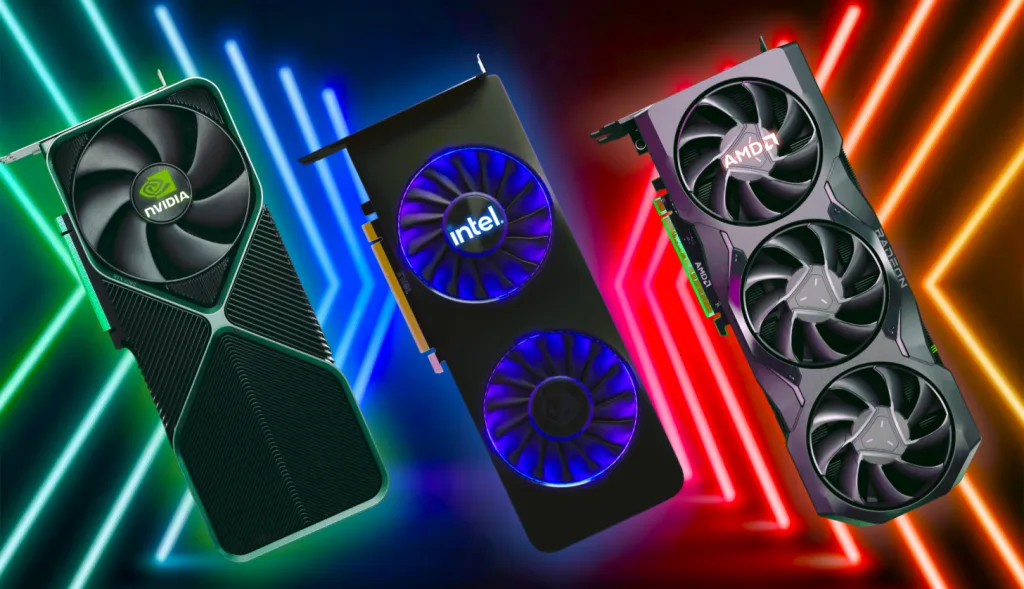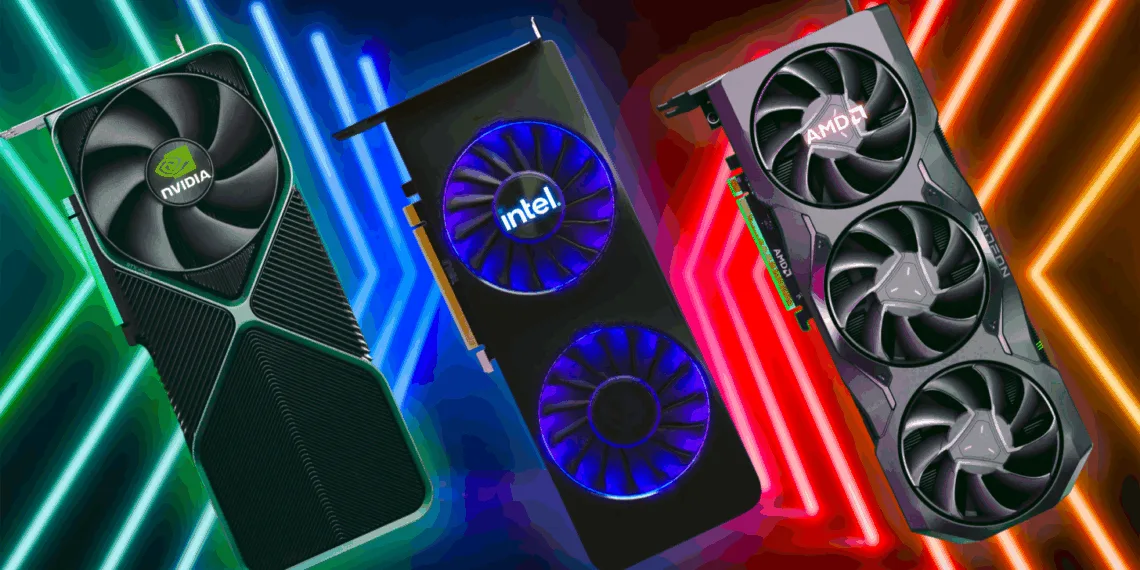The GPU landscape is shifting in 2025, and for once, it’s not NVIDIA dominating the charts. AMD and Intel are making significant strides in the Korean DIY market, with AMD seeing record growth and Intel surpassing 1% market share for the first time. But this shift isn’t necessarily due to superior technology—it’s largely driven by NVIDIA’s supply shortages.
Table of Contents
AMD’s GPU Market Share Doubles in a Year
AMD has nearly doubled its presence in the Korean GPU market, climbing from 7.69% in February 2024 to 14.65% in January 2025. More impressively, this figure surged to 20.8% by the first week of February. One of the biggest contributors? The AMD Radeon RX 7700 XT, which has seen a tenfold increase in sales over the past year. This GPU had a mere 1% market share in early 2024 but now commands over 10.26%.
Another powerhouse for AMD is the Radeon RX 7600, which now holds a 35.16% share among AMD GPUs in Korea. These numbers mark the highest AMD has ever achieved, according to Danawa Research, which tracks Korean PC hardware trends.
The increase in AMD’s market share isn’t just limited to Korea. Other global markets are reporting similar trends. Gamers and content creators have started considering AMD’s offerings more seriously due to the availability and relative affordability of their GPUs. The Radeon RX 7800 XT and RX 7900 XTX are also gaining traction, providing solid competition to NVIDIA’s high-end RTX 4080 and 4090 cards.
AMD’s recent strides in driver optimization and software support have also played a crucial role. With features like FSR (FidelityFX Super Resolution) competing with NVIDIA’s DLSS (Deep Learning Super Sampling), AMD is providing gamers with viable alternatives for performance enhancement without breaking the bank. Additionally, the power efficiency improvements in the latest Radeon GPUs have made them more attractive to users concerned about energy consumption and heat management.

Intel Crosses 1% Market Share for the First Time
Though still a small player in the GPU market, Intel is making incremental gains. Starting at just 0.09% market share in early 2024, Intel Arc GPUs have now pushed past the 1% threshold. This modest growth reflects increasing consumer interest, possibly due to budget-friendly options and an expanding feature set in Intel’s graphics lineup.
Intel’s Arc series, initially met with skepticism, has steadily improved. The Arc A770 and A750, launched as mid-range contenders, have benefited from driver updates that improved stability and performance. With competitive pricing, these GPUs are becoming attractive to budget-conscious gamers and professionals looking for an alternative to AMD and NVIDIA.
Intel is also making moves in AI-powered upscaling, challenging NVIDIA’s DLSS and AMD’s FSR with its XeSS (Xe Super Sampling) technology. By offering competitive performance with these advancements, Intel is carving out a niche in the GPU market, albeit at a much smaller scale compared to AMD and NVIDIA.
Another factor that has contributed to Intel’s rise is its integration within the broader computing ecosystem. Intel’s CPUs dominate the market, and with their focus on AI and GPU enhancements within their processors, they are well-positioned to push further into the discrete GPU space. As the company refines its software and expands its partnerships, Intel’s influence in the GPU sector could continue growing.
The NVIDIA Shortage Driving Change
While AMD and Intel are growing, the real story is NVIDIA’s shrinking market dominance. NVIDIA’s market share, which once sat above 90%, has fallen to 84.16%. The reason? A severe shortage of RTX 40 and RTX 50 series GPUs. Consumers looking for high-end cards, especially 70-class and above, are struggling to find them at major retailers like Amazon, Newegg, and Best Buy. This scarcity is forcing gamers and PC builders to explore alternatives.
NVIDIA’s supply chain issues stem from multiple factors, including high demand, semiconductor shortages, and logistical challenges. Additionally, NVIDIA’s decision to focus more on AI and data center products has led to decreased supply for consumer GPUs. The company’s increased investment in AI-based computing for enterprises and research institutions means that more of its production capacity is dedicated to high-performance computing rather than gaming-focused GPUs.
Retailers worldwide are experiencing stock shortages of RTX 40 series cards, and the highly anticipated RTX 50 series is nearly impossible to find. Scalping has also played a role, with resellers taking advantage of limited supply to sell GPUs at exorbitant prices. This situation has frustrated many NVIDIA loyalists, who are now considering switching to AMD or Intel.
How AMD & Intel are Capitalizing on the Situation
With NVIDIA struggling to keep up with demand, AMD and Intel are stepping in to fill the gap. AMD’s aggressive pricing and marketing strategies have been effective in positioning its Radeon GPUs as the next best alternative. The company’s focus on enhancing performance-per-dollar value has resonated with budget-conscious gamers who are unwilling to pay premium prices for NVIDIA’s limited stock.
Additionally, Intel’s entry into the GPU space provides an unexpected wildcard. While still small in market share, Intel’s continued presence puts pressure on both AMD and NVIDIA to innovate and keep prices competitive. If Intel continues improving its drivers and expands its GPU lineup, it could capture an even larger segment of the budget and mid-range markets.
Future Market Trends: What to Expect?
The real question is whether AMD and Intel can sustain this growth. With NVIDIA’s RTX 50 series supply constraints continuing, AMD’s RX 7000 series and even Intel’s Arc lineup could see further gains. However, if NVIDIA resolves its production issues, the landscape could shift once again.
Another critical factor is the evolution of gaming and AI-based applications. With GPU demand increasingly tied to AI workloads, cloud computing, and professional content creation, companies need to balance between gaming GPUs and enterprise solutions. NVIDIA’s leadership in AI processing still gives it an edge, but AMD and Intel are catching up with their own AI-focused innovations.
The Korean market serves as an interesting case study of how supply issues can reshape industry dynamics. If these trends continue, we could see a more balanced GPU market globally, breaking NVIDIA’s long-standing monopoly.
For now, the Korean GPU market is seeing a rare moment where AMD and Intel are making meaningful inroads against the industry giant. Whether this is a temporary fluctuation or the start of a more competitive era remains to be seen. One thing is certain: 2025 is shaping up to be a fascinating year for the GPU market.








